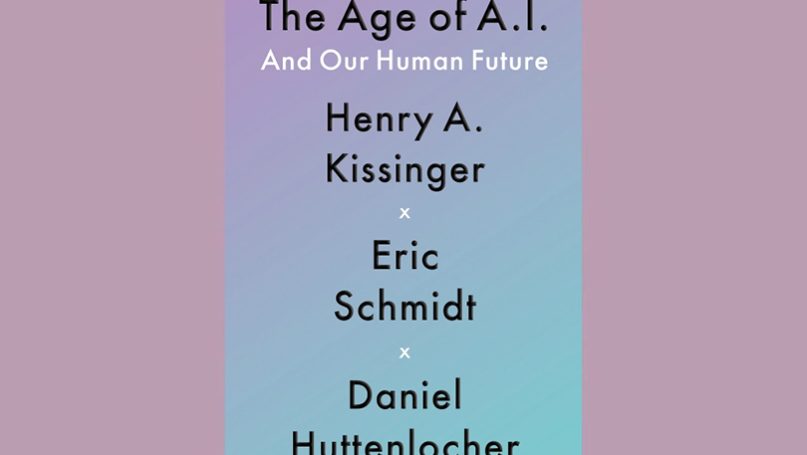Arun Teja Polcumpally

AI will indeed become ubiquitous. The discussions on whether Artificial Intelligence (AI) is good or bad are no longer useful. The time has come for discussions on how to shape AI development as per the requirements of a nation (Kalluri, 2020). The geopolitical debates anchored in nuclear weapons have shifted to AI. In the era of such unprecedented changes, an analytical account of the socio-political impacts of AI is required. The book The Age of AI: and our Human Future allows the general public to understand the impact of AI on society and global politics. Interestingly, it builds on the conclusions put forward in The Third Wave (Toffler, 1981), Future Politics (Susskind, 2018), and Superintelligence (Bostrom, 2014). It reiterates the argument that AI can be politically disruptive. Validating this argument requires expertise in foreign affairs and technological development, and the authors of The Age of AI meet these qualifications.
Henry Kissinger has published American foreign policy, the Vietnam fiasco, and the rise of China. With this book, he picks up the next geopolitical shift anchored in digital technologies. Lacking the required expertise in technology, he joins Eric Schmidt, who is well known for his long executive stint at Google, and Daniel Huttenlocher from the Massachusetts Institute of Technology. This book introduces AI disruption by elaborating on its use in medical science, pharmaceutical research, social compositions, liberal values, and the defense industry. The authors, coming from government, industry and academia do not subscribe to the idea that AI can take away human intelligence. The excerpt below provides a peek into their conceptual position.
Turing’s and McCarthy’s assessments of AI have become benchmarks ever since, shifting our focus in defining intelligence to perform (intelligent – seeming behaviour) rather than the term’s deeper philosophical, cognitive, or neuroscientific dimensions (p.56).
Understanding the Societal Impact of AI
There are two broad approaches taken to understand the interactions between technology and society. One is social constructivism and the other is technological determinism. The former espouses that the development of technology is an outcome of cultural and societal interactions. The latter approach considers technology to be neutral to societal interactions. This book opines that AI was first built to aid business. Later, business discovered innovative applications of AI (p.110). This mutual influence of AI and business shows that the technology is initially constructed with purpose. After its construction, along with its intended purpose, it would bring new use cases. This confirms the performativity analysis (Kornelia Konrad, 2017) that AI and society will provide a better understanding of social changes. The performativity approach to understanding AI considers the mutual interactions of technology and society. This is similar to Gidden’s understanding of structuration theory, which explains the interactions between the social institutions and situated interactions between individuals and groups (Whittington, 2010). Though there is no direct mention of these approaches, the description of AI in this book appears to share their background.
No comments:
Post a Comment